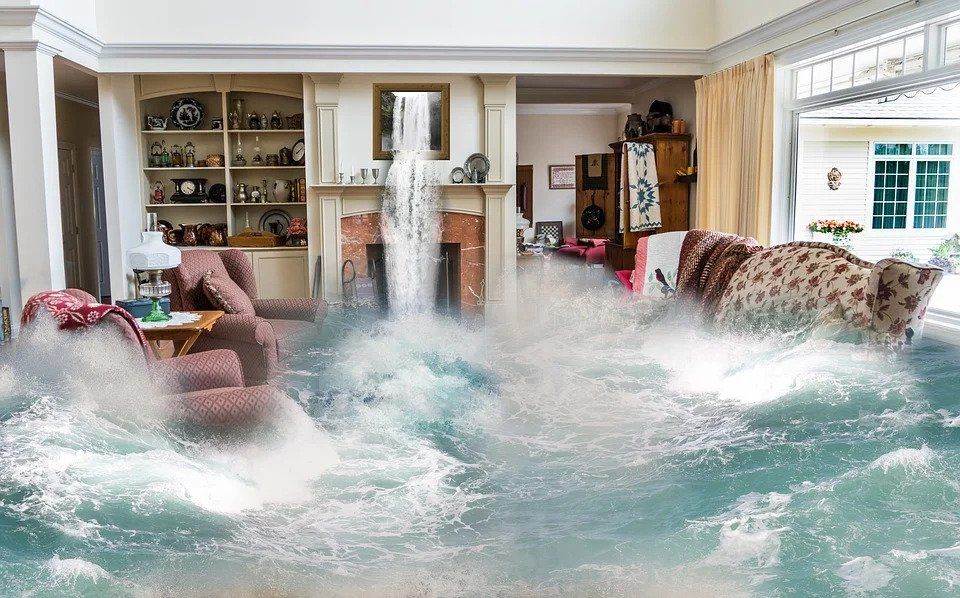
There are many differing opinions on the subject of climate change. However, one thing that no one can deny is that the world is increasingly experiencing adverse weather. Hurricanes, tornadoes, and violent storms are no longer a rarity.
If you own a waterfront home, your home is faced with more risks than an inland home. Rising water levels pose a threat and open water allows strong winds to blow freely to your property. For these reasons, it is crucial that your house be well-prepared for such eventualities.
There are some key areas that you may want to pay attention to for waterproofing purposes. They include:
Roofing
Proper roofing should be able to withstand rain, snow, and the force of wind as well. For this to be possible three main factors come into play:
- Pitch
- Roofing material used
- Drainage
Pitch
Pitch refers to how your roof is set up in terms of height and the way it slopes. In order for water to drain well and snow to slough off your roof, it needs to be pitched at just the right angle. The slope should be steep enough that products of weather do not accumulate on it resulting in damage and leaks. If rainwater tends to pool on your roof, consider getting it redone with better pitching.
Roofing Material
Most homes have tiling as the exterior roofing material. They are popular for their aesthetics and considerable durability. However, it is essential to note that roofing tiles have different impact ratings which signify how resilient they are. As you weatherproof your home, consider installing options with a high impact rating such as composite tiles.
In addition, ensure that you have a reliable waterproof membrane underneath the exterior roofing. It protects your structure against leaks especially in the event that the tiling is affected by weather challenges or depreciation.
Drainage
Gutters take on everything that sloughs off the roof and drains it off. They tend to get clogged by leaves and other debris over time therefore it would be best to schedule cleanups.
Windows
If your home has ordinary glass window panes, it might be time for an upgrade. Consider a stormy night where winds from the ocean are hurling every weak tree branch in their wake. Would your windows stand up to that?
Double-glazed or triple-glazed windows would serve you better. They are designed to take on high impact without breaking and can also reduce noise from storms. Moreover, they have a high energy efficiency rating as they are insulative.
That said, their performance is incumbent on how well they are installed. They should be weather-sealed to prevent leaks and properly fitted on their frames.
Insulation
Now that your roof and windows are in top condition, you may need to consider how to stay warm. Summers are glorious in waterfront homes but when temperatures begin to dip, insulation is your only saving grace.
Aim for a type of insulation that offers you high thermal performance. Nevertheless, your choice will depend on the type of space you are trying to insulate. Small spaces that are hard to reach, for instance, would do well with blown-in insulation.
Your home also loses heat through draught sources like windows that are not well sealed or doors with gaps underneath. Such spaces are also likely to let floodwater during heavy downpours. It is advisable to have them repaired to fit better.
Outdoor Area
It would be self-defeatist to address the structure of your home and not the immediate area that surrounds it. At the end of the day, your compound affects your home. For additional protection, consider installations such as:
Sea Walls or Revetments
A shoreline is like a buffer zone between your home and the water body it faces. When it gets eroded and diminished, it makes flooding on your property much easier. Further, in extreme cases, it can be a threat to the foundation of your home.
Sea Walls and Revetments
A sea wall is a structure that bars the sea or ocean from eroding further into the shoreline. However, there are arguments that they are only feasible in the short run given as the course of nature is unstoppable. Still, when properly designed and with occasional maintenance, they are beneficial.
Revetments, on the other hand, are made of loose material such as rocks. They are lauded for taking on wave energy better than sea walls. They may work well for smaller water bodies such as lakes in terms of preserving the shoreline from erosion. On flooding, they are of little help.
Dock and Bridge System
Rising water levels are the main concern to look out for when waterproofing your dock. They could make accessing your property near impossible and dangerous too when the dock is submerged. A floating dock may be a better solution as it is designed to float up as the water rises.
For access to any adjacent structures you may have, a floating bridge system would be ideal. Like the floating dock, it self-adjusts to water levels while offering great stability. Floating bridges are also highly durable and resistant to weather.
Conclusion
The best time to weatherproof a house is during construction so as to choose suitable layouts and materials. Nevertheless, all is not lost. You can still make changes to a built home and make it just as sturdy. It is recommendable that you seek the services of professional construction experts to obtain the desired results.
Your home should be a refuge of comfort and safety. A major part of that lies in making it safe for all seasons.










